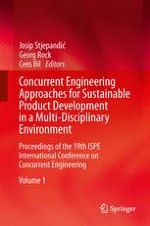The CE Conference series is organized annually by the International Society for Productivity Enhancement (ISPE) and constitutes an important forum for international scientific exchange on concurrent and collaborative enterprise engineering. These international conferences attract a significant number of researchers, industrialists and students, as well as government representatives, who are interested in the recent advances in concurrent engineering research and applications.
Concurrent Engineering Approaches for Sustainable Product Development in a Multi-Disciplinary Environment: Proceedings of the 19th ISPE International Conference on Concurrent Engineering contains papers accepted, peer reviewed and presented at the annual conference held at the University of Applied Sciences in Trier, Germany, from 3rd-7th of September 2012. This covers a wide range of cutting-edge topics including:
Systems Engineering and Innovation
Design for Sustainability
Knowledge Engineering and Management
Managing product variety
Product Life-Cycle Management and Service Engineering
Value Engineering
